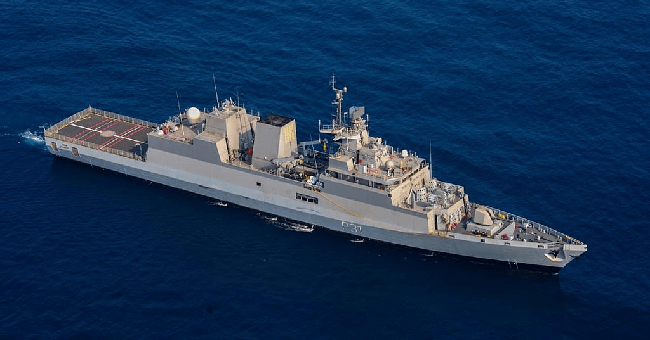With India refusing to relinquish control to China at the de-facto border in Eastern Ladakh where the two nations have been locked in a five-month-long stand-off, there is a high probability of Beijing flexing its muscle in the Indian Ocean.
What would be an added incentive for President Xi Jinping is that India, which operates one of the world’s largest navies, sits at the junction of shipping routes which separate China from its main source of oil and gas in the Middle East and key markets of Europe.
Having already seen Beijing carry out their expansionist policy at the Line of Actual Control (LAC) and in the South China Sea, it seems that the Indian Navy under the helm of Prime Minister Narendra Modi is ready to thwart any wandering Chinese submarine or warship in its waters, and have just a sea monster they have been waiting to unleash— the INS Kavaratti Stealth Corvette.

Belonging to Project 28 Kamorta-Class, which was built by the Indian Navy’s Directorate of Naval Design (DND), the Kavaratti is the last of the four indigenously-built anti-submarine warfare (ASW) stealth corvettes developed under Modi’s “Make in India” initiative.
The warship, which was built by the Kolkata-based Garden Reach Shipbuilders & Engineers (GRSE), was recently commissioned in the Navy by Chief of the Army Staff, General Manoj Mukund Naravane, at the Naval Dockyard in the southern port city of Visakhapatnam.
https://twitter.com/ThingNavy/status/1319146010338181120
The Indian Navy said in a brief statement, said – “The ship portrays our growing capability in becoming self-reliant through indigenization. With the induction of Kavaratti into its fold, the Indian Navy’s preparedness will be enhanced.”
Indian Navy to induct indigenously built anti-submarine warfare ships INS Kavaratti amid tensions with China. https://t.co/tnjg5vkq9w
— Swarajya (@SwarajyaMag) October 21, 2020
The last of four indigenously built Anti-Submarine Warfare (ASW) stealth corvettes “INS Kavaratti” under Project 28 (Kamorta class) to be commissioned into Indian Navy by Indian Army Chief General Manoj Mukund Naravane at Naval Dockyard, Visakhapatnam today: Indian Navy pic.twitter.com/ngoiuMfyPk
— Major Gaurav Arya (Retd) (@majorgauravarya) October 22, 2020
Designed as part of Project 28 of the DOD, Kavaratti represents the perfect example of an indigenized defence product with 90 percent of its content being drawn from within the country.
Defense writer, Peter Suciu, writing for the National Interest – The Project 28 Kamorta-class has been seen as an important demonstration of India’s ability to design and build modern warships rather than relying on receiving so-called “hand-me-down” vessels from other powers. Ninety percent of the materials used in the construction of the warships include indigenous content.”
The warship is more than well capable of fighting under nuclear, biological, and chemical environments, and is described as a “game-changer” in the war against Chinese Submarines who have a tendency of making sorties in foreign seas.
The warship, which has been designed by Indian naval designers with the help of a Swedish company, is built using high-grade DMR 249A steel, with the complete superstructure of the ship built out of composite materials including locally sourced carbon fiber.
Why The ‘Official’ Saudi-Israel Patch-Up Could Be ‘Inherently Dangerous’ For Mohammed bin Salman?
Moreover, the ship has been built in a unique “X shape” along with sloped surfaces, with one of the most prominent features of the warship being its advanced stealth technology due to its reduced Radar Cross Section (RCS), which according to the Indian Navy making it less susceptible to detection by the enemy.
The warship which can carry 134 sailors, is equipped with 12 defence missile systems and is also capable of launching short-range, medium, and long-range rocket attacks. Apart from that, the ship will also have under-water weapons, including the depth range rocket and torpedoes.
“Kavaratti has state-of-the-art weapons and sensor suite capable of detecting and prosecuting submarines. In addition to its anti-submarine warfare capability, the ship also has a credible self-defence capability and good endurance for long-range deployments.” according to a report in the Economic Times.